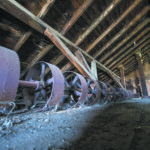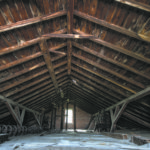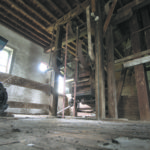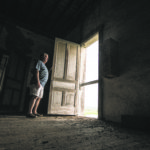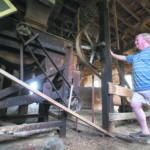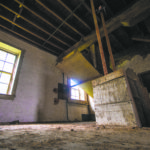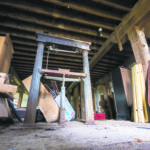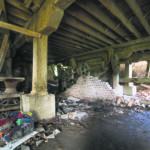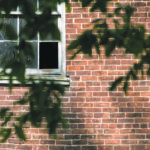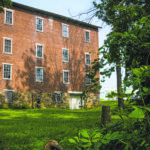Men shouted orders, back in the day, as the race that cut into Penns Creek diverted water to turn the wheel in the basement of the redbrick mill across the street from where Heimbach’s Country Store sits today.
Horse-drawn wagons — and later trucks — delivered grain, which the mill-powered elevator lifted scoopful by scoopful and separated into bins on the third floor. Machines clanked and groaned as they processed the grain into flour, cornmeal or other milled products, and more wagons and trucks drove in to haul the flour to stores and farms.
Today the Selinsgrove mill stands silent.
People notice it as they zoom by heading for the formerly named Camelback Bridge that joins Mill Road to Route 204, but nobody has to slow down for trucks delivering grain. Nobody has stopped by to exchange gossip and pick up flour in decades. Nobody knows what will become of the ancient building.
“We bought it in 1997, Kathy and I,” said Rick Bailey, of Selinsgrove, stepping over fallen boards and debris in the basement of the mill.
Not much information is available, but he learned that a mill existed there as early as 1766, though whether it’s the same structure that stands today is anybody’s guess. It has changed ownership over the years and was called the (Leonard) App, (Franklin) Schach, Herman or Monroe Mill. The Baileys bought it thinking they might renovate the building into consignment shops or some other business.
“It was a mess at the time, grown over with weeds,” Bailey said.
He cleared and mowed the grassy area between the mill and Penns Creek, but daily living got in the way of other plans. Leading a friend through the mill recently, he pointed out the area in the basement where the horizontal water wheel once rested on a vertical axis, powering the machinery in the rest of the mill.
The two men tried to envision how the mill worked, guessing at the use of trap doors in floors and wooden chutes along the walls. They paused at the iron scale, the name “Fairbanks” still faintly visible across the top, and debated about where in the process the grain was weighed.
Bailey pointed out the walls, four bricks thick – somewhat easier to determine since a car knocked a big hole in the eastern wall last year.
“But can you imagine how long it took to build this?” he said, shaking his head. “They knew their stuff.”
The stairs grew inexplicably wider and the ceilings higher with each floor. One room on the first floor, apparently an office, was paneled with pressed iron. A hole high up on the wall showed where a cook stove pipe once directed smoke outside. On the third floor, the leather straps that held scoops on the grain elevator were exposed, one still intact in its wooden casing and one ripped and piled on the floor.
Stan Shaffer, of Middleburg, worked at the nearby State School farm for five years starting in 1975. He recalled going to the mill for grain.
“That’s where the state stored grains that went into food for the dairy and the piggery,” he said.
He remembered weighing grain on the scale and even the Fairbanks label. Sometime around 1980, the farm’s ownership was transferred from the Department of Welfare to the Department of Agriculture.
“It was a neat old mill,” Shaffer said. “It was nice to watch it run.”
Bailey is looking to sell the mill now. He has considered demolishing it but hates the thought of losing the iconic building.
“I hate to see it go. It’s like a landmark,” he said.
It seems to be structurally sound but would require deep pockets to restore and update it. He could envision a restaurant or brew pub there, or possibly office space.
“It’d be a lot of work,” he said, glancing around at the dusty remnants of chutes and pulleys. “But it’d be cool.”




